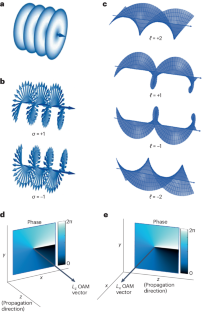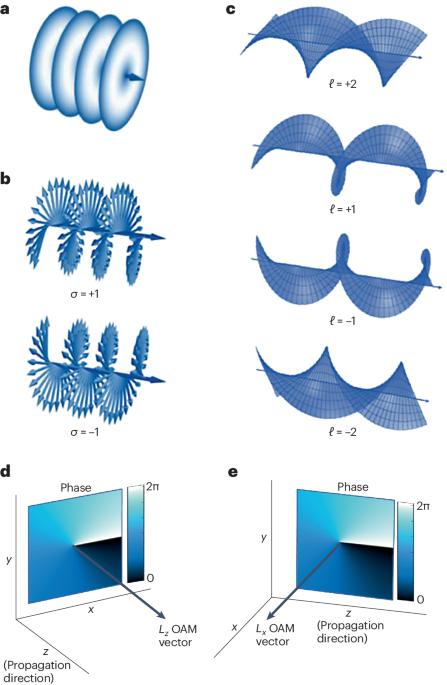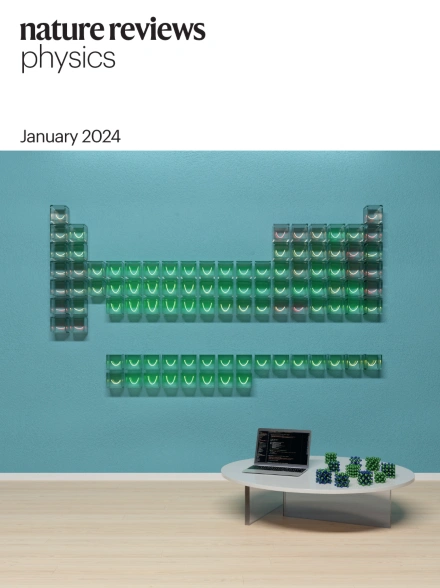Orbital angular momentum lasers
IF 44.8
1区 物理与天体物理
Q1 PHYSICS, APPLIED
引用次数: 0
Abstract
Light can be tailored to carry angular momentum well beyond the restriction of its two spin states, left- and right-circularly polarized light, by imbuing it with orbital angular momentum (OAM). OAM is controlled by imparting finer and finer azimuthal phase gradients, twisting the wavefront ever tighter in one of two helicities, clockwise or anticlockwise. This can be done directly within a laser — OAM lasers — by imprinting an intracavity twist on the circulating light, but it requires judicious laser cavity design to break nature’s angular momentum degeneracy. Without this, the laser produces equal measures of both helicities, for no net OAM. We review the physics of OAM lasers, covering diverse symmetry-breaking approaches such as gain or loss control, asymmetric cavity geometries and geometric phase control. Structured matter allows this symmetry breaking to be done at the microscale and nanoscale, for OAM lasers based on topological matter, photonic crystals and optical breaking of chiral symmetry in microring cavities, as well as leveraging non-Hermitian photonic design at exceptional points. The exciting prospect of using structured matter to engineer twisted light is discussed along with the opportunities and challenges ahead. This Review covers the intriguing physics behind orbital angular momentum lasers, summarizing the exciting prospects at the interface between structured light and structured matter.


轨道角动量激光器
通过赋予光以轨道角动量(OAM),可以使其携带的角动量远远超出其两种自旋状态(左旋和右旋偏振光)的限制。控制轨道角动量的方法是施加越来越细的方位角相位梯度,使波面在顺时针或逆时针两个螺旋中的一个螺旋中扭转得越来越紧。这可以直接在激光器(OAM 激光器)中实现,方法是在循环光上印上腔内扭曲,但这需要明智的激光腔设计,以打破自然界的角动量退化。如果不这样做,激光器就会产生等量的两种螺旋,而不会产生净OAM。我们回顾了 OAM 激光器的物理学原理,包括各种打破对称性的方法,如增益或损耗控制、非对称腔体几何结构和几何相位控制。结构物质允许在微米和纳米尺度上打破对称性,用于基于拓扑物质、光子晶体和微孔腔中手性对称性的光学打破的 OAM 激光器,以及在特殊点上利用非赫米提光子设计。本文讨论了利用结构物质来设计扭曲光这一令人兴奋的前景,以及未来的机遇和挑战。
本文章由计算机程序翻译,如有差异,请以英文原文为准。
求助全文
约1分钟内获得全文
求助全文
来源期刊

Nature Reviews Physics
Multiple-
CiteScore
47.80
自引率
0.50%
发文量
122
期刊介绍:
Nature Reviews Physics is an online-only reviews journal, part of the Nature Reviews portfolio of journals. It publishes high-quality technical reference, review, and commentary articles in all areas of fundamental and applied physics. The journal offers a range of content types, including Reviews, Perspectives, Roadmaps, Technical Reviews, Expert Recommendations, Comments, Editorials, Research Highlights, Features, and News & Views, which cover significant advances in the field and topical issues. Nature Reviews Physics is published monthly from January 2019 and does not have external, academic editors. Instead, all editorial decisions are made by a dedicated team of full-time professional editors.
 求助内容:
求助内容: 应助结果提醒方式:
应助结果提醒方式:


